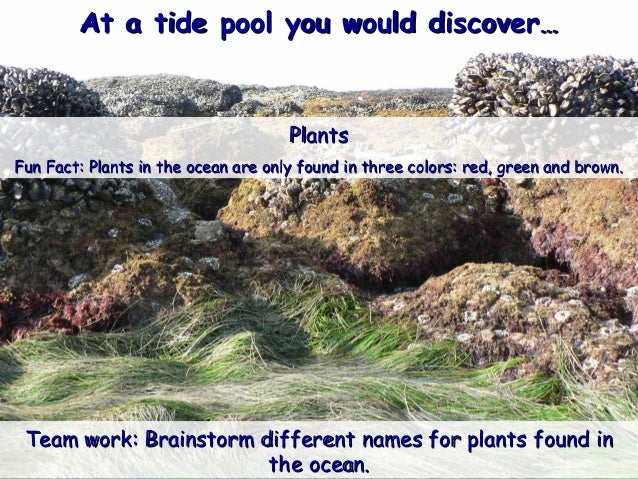
Comparing the size, shape and colours of seashells is a great way of exploring the diversity in molluscs that live along rocky shorelines. Exploring Seashell Fauna Grades 3–10ĭifferent types of marine invertebrate make different types of shells. Make use of the field sheet in this exercise. Follow an activity sheet to find the answers to a range of fascinating questions. There are many physical challenges faced by intertidal animals in the daily cycle.

Look closely to appreciate how marine organisms use boulders, crevices and pools to survive during low tide. Currently there is no signage at the site, so it is essential you print out the Discovery Trail info pack and take it with you.

Incorporate the ‘Rock Pool Detective’ and ‘Exploring Seashell Fauna’ activities to engage students further in this outdoor classroom. Explore the intertidal zone to discover, extreme diversity, amazing adaptations, and hidden secrets all in one short walk. Take the Trail by following 9 discovery points along a mapped walking trail and read from a detailed information sheet. During low tide explore the exposed reef and rock pools to appreciate the diversity of life in the intertidal zone. The Hinsby Beach Discovery Trail can be enjoyed by individuals, or led by a teacher/guide. Outdoor activities Hinsby Beach Discovery trail all ages Compare different marine reserves, and ask – are they effective in protecting species and habitats, or are other measures required? Small groups can perform up to four tasks to research the web and learn about the specific values of different reserves, what they protect, how they protect, and why.

In this lesson students learn about the diverse marine ecosystems we have in Tasmania, the problems they face, and the role of marine reserves and conservation areas. What are Marine Reserves and how do they protect habitats and species? Grades 4–10 Students can identify the role the community can play in the recovery of their species, or their key habitat. Now ask each student which pressures are most relevant to their species and why? Students may need to research the threats and stresses to the survival of their population, such as loss of habitat, overfishing, boating, or pollution. Extension Activity 2 – Reef Restoration Action and Solutions Grades 5–10 Now ask each student which pressures are most relevant to their species and why? Think about if they are direct or indirect modes of impact. Identify the source of a pressure as either human based and environmental, and as land based or aquatic. Students consider the types of pressures that affect biodiversity in reefs and the inter-tidal zone of estuaries. Extension Activity 1 – impacts to Rocky Reef Real Estate in the Derwent Grades 3–10 The learning objectives of this activity are to research a species and determine its habitat and resource requirements as both a juvenile and adult. Students create a real estate pamphlet in the style of a fold out brochure that is geared towards their particular species and its life history. Rocky Reef Real Estate Activity Basic Activity – Investigating species habitat requirements all agesĪssign each student a reef species from the list of 30 provided. In small groups ask students to explore the website to answer a range of general exploratory questions. The DEP website provides a general introduction to tidal wetlands and macrophyte beds in the Derwent estuary. Classroom activities Introduction to rocky reefs all ages Many of these activities also help students develop a consideration for other creatures and the environment and develop their social skills by working on small teams. These resources also help to develop the students listening, writing and recording skills through creating charts, making records of animal’s diet and sensitivity to pollution, thinking about biological processes and creating visual classroom displays.

The aim is to promote aquatic conservation by raising awareness of our impacts on urban waterways, the value of maintaining healthy waterways and the need for habitat restoration and protection. However, the material has been designed to complement each other and if delivered together will enable students to gain a good understanding of the ecology and importance of rocky reefs and the intertidal zone to the broader estuary. A single classroom activity or the interpretive walk can be presented alone. The material is suitable for grades K–10. The Derwent Estuary Program have developed a range of classroom activities and an outdoor interpretive walk focused on rocky reefs and the intertidal zone with support from the Australian Government’s Caring for Our Country.


 0 kommentar(er)
0 kommentar(er)
